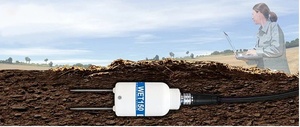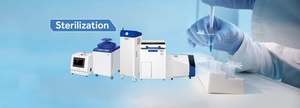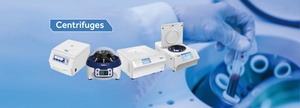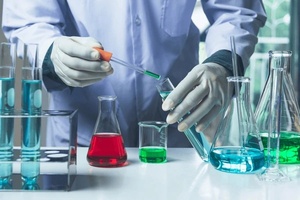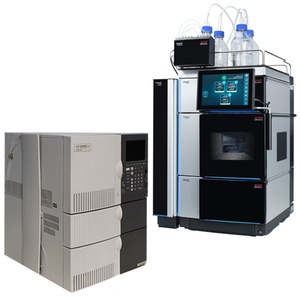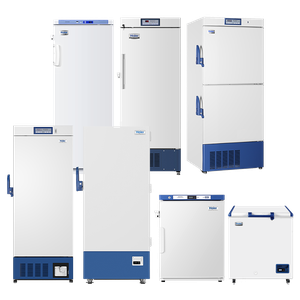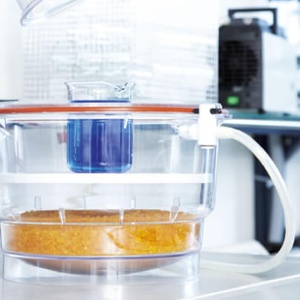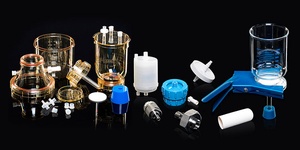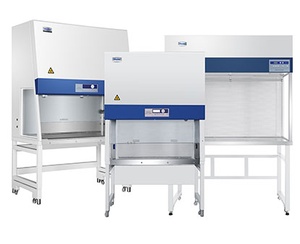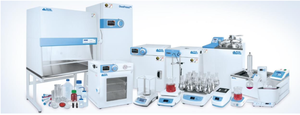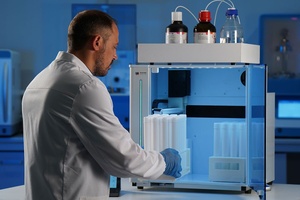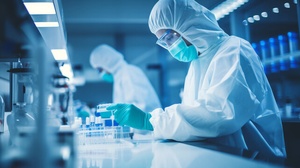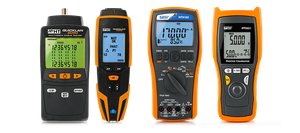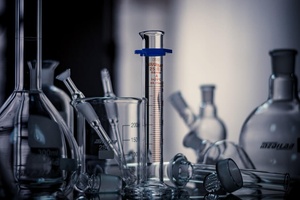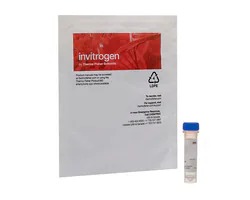Category
Innovative Solutions for Advancing Agricultural Science At LabMart, we recognize the critical role that agricultural research plays in improving crop yields, enhancing sustainability, and ensuring food security. Our range of high-quality products is designed to support agricultural researchers in addressing challenges related to plant science, soil health, crop protection, and more. View More View Less
Centrifuges and microcentrifuges are commonplace in laboratories. They are used to separate solutions using the centrifugal force created by the rotor moving on a fixed axis. Successful sample centrifugation depends on the density, temperature, and viscosity of the sample and solution, and the speed of the rotation. Benchtop Centrifuges Centrifuges are often placed on the benchtop or work surface for easy and immediate access. Options include general-purpose, clinical, compact, and special-purpose benchtop centrifuges. These devices may be ventilated (operated without temperature controls), refrigerated, or heated. Units may be sold with or without rotors, and rotor options may also be available. The choice of rotor will determine the maximum number of samples that can be processed simultaneously and will help determine the maximum g-force or speed that can be achieved. In fixed-angle rotors, the tubes remain the same angled position while being spun. In contrast, as the rotational speed increases, samples in swinging bucket rotors spin in a horizontal position. The type of rotor also affects where the solids “pellet” forms — on the side (fixed-angle) or the bottom (swinging-bucket) of the tube. Swinging-bucket rotors can also tolerate higher speeds, an important factor when separating biological macromolecules. Microcentrifuges Microcentrifuges are specifically designed to accommodate tubes that hold less than 5.0mL. Although benchtop centrifuges can be fitted with rotors for microtubes, microcentrifuges usually have a smaller footprint, which makes for a less-crowded work area. As with other benchtop centrifuges, these units can be ventilated (operated without temperature controls) or refrigerated. Most are sold with a rotor, although additional alternate rotors may be available. Floor Model Centrifuges Floor model centrifuges have larger capacities and can operate at higher speeds. Types of floor model centrifuges include general purpose, low-speed (RCF maximum of 7000 × g), superspeed (70,450 × g max. speed), and ultracentrifuges (g-forces up to 1,000,000 × g). View More View Less
We offer a comprehensive portfolio of lab chemicals including acids, salts, caustic alkalis, bases, metals, solvents, and special products for analytical use in wet chemical labs, organic labs, and elsewhere. With strict quality controls and excellent batch-to-batch consistency, you can always expect reliable results. We also supply complementary lab chemicals for daily applications, such as drying agents, cleaning detergents, indicators, and auxiliaries. For maximum safety and simplicity during lab work, we provide specialized safety products, such as withdrawal systems, accessories, and powerful spill absorbents. View More View Less
Chromatography and spectrometry are important techniques with many scientific, academic, and industrial applications. LabMart offers a comprehensive range of equipment, products, and services that can help you improve efficiency and outcomes in your laboratory. Take advantage of the collective power of chromatography Whether you are working to achieve the next breakthrough in research or looking to have full confidence and precision in your QA/QC routine results Drive innovation, improve productivity, and achieve operational excellence to deliver a maximum return on your investment. With the largest portfolio of chromatography instruments, software solutions, columns and consumables, we remain a steadfast and committed partner in your endeavor to improve the world around us. View More View Less
When you need durable and budget-friendly classroom laboratory equipment, count on the Fisher Science Education channel. We offer a wide range of products that enhance instruction for every age, from elementary and middle school to college-level biology. For reliable measurement, find balances and scales that support a hands-on educational experience. For keeping students safe from harmful odors, browse our selection of affordable fume hoods. And choose from our huge assortment of compound and stereoscopic microscopes to help bring your lessons to life. They are available in a range of magnifications for viewing slide-mounted or unmounted specimens. Whatever your focus — biology, chemistry, physics, Earth science, etc. — encourage scientific discovery with high-quality classroom laboratory equipment, available at the right price. View More View Less
Refrigerators, freezers, and cryogenic equipment are designed for the cold storage of samples that are used in industrial, clinical, and research laboratory settings. Cryogenic equipment is used to store samples in liquid nitrogen (-196°C to -210°C). Internal temperatures will remain at or below -196°C when the supply of liquid nitrogen is consistently replenished. Refrigerators maintain temperatures somewhere between 1° and 12°C. Choose refrigerators with capacities from 1 to 80 cubic feet in under-the-counter, benchtop, or upright configurations. Refrigerators may have single or multiple compartments, internal shelving or drawer formats, and solid or glass hinged or sliding door options. Freezers are available in a variety of formats and sizes, including upright, chest, and countertop. Insulated containers maintain a constant temperature to help protect temperature-sensitive materials during benchtop use, short- or long-term storage, or transport. Standard freezer temperatures range from -10° to -30°C. Ultra-low-temperature freezers may have more than one internal doors to help with temperature maintenance and sometimes have keyed locks. Ultra-low-temperature freezers maintain between -50° and -90°C. Freezers designed for enzyme or plasma storage or for blood banks and pharmacies often have integral temperature recording capabilities and alarm systems to help with regulatory requirements. They can also have flexible internal shelving, sliding drawers, or bins to accommodate specific products or materials. Refrigerators and freezers may also be designed to store flammable or potentially explosive products. Refrigerator and freezer accessories include repair components, replacement parts, and support products that are specifically intended for cryopreservation systems. View More View Less
Hygroscopic substances and drying agents for use in laboratory settings; drying agents are commonly used to keep other substances and samples dry, or to prevent moisture from forming on/in containers. Products include drying tubes, kits, etc. Desiccants are typically chemicals or compounds that are hydroscopic (readily absorb moisture). Common desiccants include clays, silica gels, and calcium sulfate. In the lab, desiccants are commonly used in desiccators and desiccator cabinets, with in-line air and gas drying columns, in absorption bulbs, U-tubes, glove boxes, sealed chambers, and wherever a dry environment is required. They are also used during transport, for storage, and maintaining materials and products ─ everything from clothing to electronics. The moisture may come from a variety of sources: Water vapor in the air Moisture in packaging materials Moisture from permeation or leakage Some desiccants contain an indicator or additive that produces a color change with moisture absorption. The indicator allows the user to see when the desiccant has absorbed its maximum amount of moisture and needs to be replaced or regenerated. Some desiccants can be reused many times simply by heating them in an oven to allow moisture to evaporate. For indicating desiccants, one can also easily tell when the desiccant is again ready to use by the change back to the original color. Desiccants may be available in a range of mesh or particle sizes. The Tyler Equivalent is a common type of mesh sizing and indicates the number of openings per linear inch of mesh. Common desiccant mesh sizes are 4, 8, and 10 to 12. Size 4 is typically used in gas phase applications; they are larger and less likely to break. Size 8 is smaller and can be more tightly packed. View More View Less
Essential Products for Achieving More Choose from a wide range of reliable and accurate equipment and instruments. Whether you need large equipment, like freezers, ovens, and incubators, or small instruments, like microscopes, refractometers, and meters, you can count on LabMart. View More View Less
Systems, devices, and accessories designed for the extraction of compounds in various phases; available in a variety of materials and configurations. In the food industry, scientists use extraction systems to check for contaminants and other harmful substances in food samples to maintain food safety. What Are Extraction Systems Used for? Extraction systems are used to measure the fat content of foodstuffs or other materials. Although extractions can be performed manually, using extraction systems can reduce exposure to heat and toxic solvents like ethyl or petroleum ether. Soxhlet Extraction Systems The method was developed in 1879 by Franz von Soxhlet to extract lipids from solid materials. Typically, Soxhlet extractions are especially useful when the compound and the impurity have different solubilities in the solvent. The extractor can run by itself and efficiently uses only a small amount of recycled solvent to dissolve a large amount of material. A Soxhlet extractor consists of a percolator that circulates the solvent, a thick filter paper thimble that retains the solids, and a siphon to periodically empty the thimble. Goldfisch Extraction Systems This method is recognized by AOAC International (agricultural chemists) as an acceptable procedure for measuring fat and oil content. Extraction times can be reduced from 16 to approximately four hours with this reflux method. View More View Less
Whether you’re looking for everyday productivity or cutting-edge technology, our reagents, consumables, and instruments will deliver the consistent results you need every time. The extensive life sciences portfolio includes: systems for real-time and endpoint PCR cell, protein and molecular biology technologies cell culture media, supplements, cells and reagents With a wide selection of options within each category, you’ll find a product to fit your unique needs and budget. View More View Less
It’s essential to select the right bottles, flasks, jars, beakers, and accessories to support your research. Some labs require the inert, heat-resistant, and customizable qualities that laboratory glassware provides, while others prefer the price and durability of plasticware. Whether you need glass, plastic, or both, LabMart offers various lab glassware and plasticware varieties to help you conduct your experiments. Choose from multiple products, materials, sizes, packaging, and other options. View More View Less




 0
0

